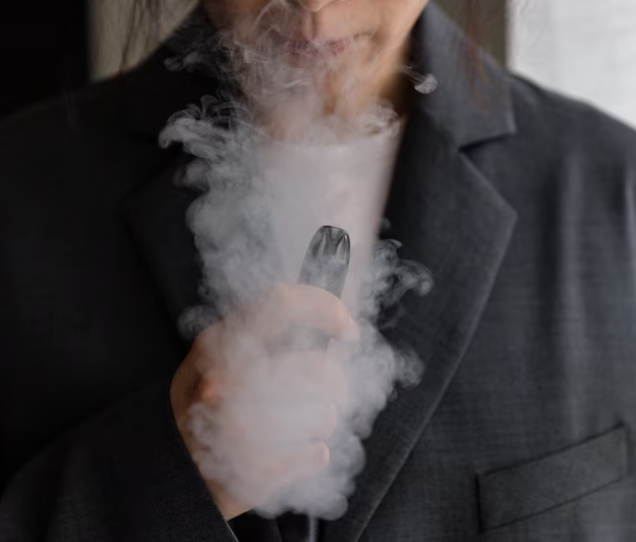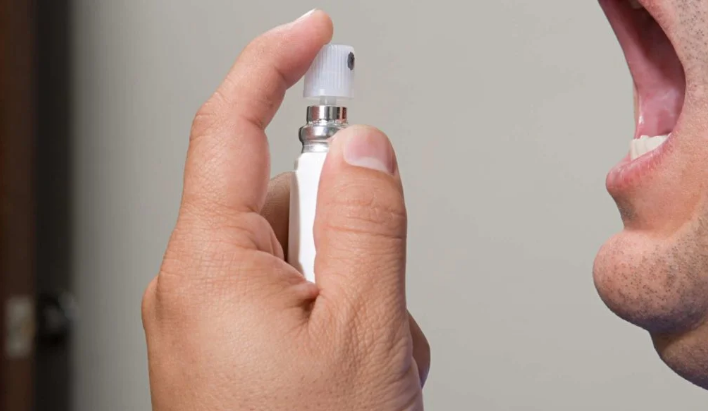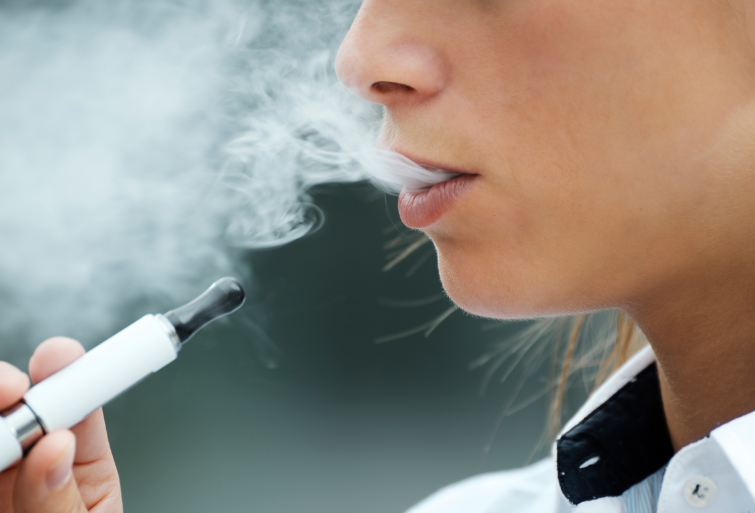Vaping can lead to bad breath due to dry mouth and bacterial growth caused by ingredients like propylene glycol and nicotine.

The Impact of Vaping on Breath
Immediate Effects on Breath
Vaping and Oral Environment Alteration
Vaping introduces aerosol particles into the mouth, which can affect the balance of oral microbiota. The propylene glycol and vegetable glycerin base of most vape juices can lead to a reduction in mouth moisture, promoting bad breath. Studies suggest that people who vape experience dry mouth, which can exacerbate the growth of anaerobic bacteria, the primary culprits behind bad breath.
Chemical Ingredients and Breath Odor
The flavors added to vape juice can temporarily mask bad breath, yet the underlying effect is a drier oral environment conducive to odor-causing bacteria. Certain flavors might also leave a lingering smell that contributes to unpleasant breath.
Long-term Consequences for Oral Hygiene
Impact on Saliva Production and Oral Health
Consistent vaping can lead to decreased saliva production over time. Saliva is essential for neutralizing acids and washing away food particles. Without sufficient saliva, individuals are at a higher risk for gum disease, tooth decay, and chronic bad breath. A study found that individuals who vape regularly reported a higher incidence of oral health issues compared to non-vapers.
Alteration of Oral Microbiome
The long-term use of e-cigarettes can alter the oral microbiome, making it more conducive to harmful bacteria and fungi. This imbalance not only affects breath but can also lead to more serious conditions like periodontal disease. Research indicates that vapers have a higher abundance of pathogenic bacteria in their mouths, which is directly linked to gum disease and, consequently, bad breath.
Nicotine’s Role in Oral Health
Nicotine, a common component in many e-liquids, can reduce blood flow to the gums, exacerbating oral health issues. Reduced blood flow can lead to gum recession, which is often associated with persistent bad breath. Nicotine’s vasoconstrictive properties mean that any damage or infections in the oral cavity may heal more slowly, prolonging any associated bad breath.
Comparative Analysis
Vaping vs. Smoking: Effects on Breath
| Feature | Vaping | Smoking |
|---|---|---|
| Odor | Produces a less noticeable odor, often masked by flavorings. | Leaves a strong, distinctive tobacco smell that lingers on breath, clothing, and hair. |
| Chemicals Impacting Breath | Mainly propylene glycol and vegetable glycerin, which can cause dry mouth but less odor. | Contains tar and numerous other chemicals that significantly contribute to bad breath. |
| Oral Hygiene Impact | Can lead to dry mouth, affecting oral microbiota balance. | Causes more severe issues like gum disease, which directly contributes to bad breath. |
| Dry Mouth | Higher due to the hygroscopic nature of vaping ingredients, leading to potential bad breath. | Less directly caused by smoking, but the overall oral health degradation promotes dry mouth. |
Vaping vs. Traditional Oral Health Challenges
| Feature | Vaping | Traditional Oral Health Challenges |
|---|---|---|
| Impact on Oral Flora | Can alter the oral microbiome, creating an environment that may increase harmful bacteria. | Issues like poor dental hygiene or diets high in sugar have a well-documented impact on oral flora. |
| Contribution to Dental Diseases | Linked to conditions such as dry mouth and gum inflammation, which can precede more serious diseases. | Traditional challenges directly cause cavities, gum disease, and tooth decay. |
| Preventive Measures | Regular oral hygiene and hydration can mitigate many vaping-related oral health issues. | Involves comprehensive oral care, including regular brushing, flossing, and dental check-ups. |
| Reversibility of Effects | Some effects, like dry mouth, are reversible with cessation and increased oral care. | Many effects can be halted or reversed with improved oral hygiene and professional dental care. |
Key Observations:
- Vaping tends to produce less offensive odors compared to smoking, primarily due to its flavored aerosols that mask the smell. However, it can still lead to dry mouth and alter the oral microbiome, indirectly affecting breath freshness and oral health.
- Smoking has a more direct and severe impact on oral health and breath, primarily through the presence of tar and other harmful chemicals. These substances not only worsen breath odor but also contribute to long-term oral health issues like gum disease and tooth decay.
- Both vaping and traditional oral health challenges stress the importance of good oral hygiene practices. While the specific issues may vary, the foundation of preventing and addressing oral health problems remains consistent: regular brushing, flossing, hydration, and professional dental check-ups.

Contributing Factors
Ingredients in Vape Juice That Affect Breath
Propylene Glycol and Vegetable Glycerin are the base liquids in most vape juices. These substances are hygroscopic, meaning they absorb water. When vaped, they can lead to dry mouth by reducing saliva production, which is crucial for neutralizing acids and washing away food particles. A dry mouth environment is more conducive to the growth of anaerobic bacteria, which are often the cause of bad breath.
Nicotine is another common ingredient in vape juice that can reduce blood flow to the gums, exacerbating oral health issues and contributing to bad breath. Reduced blood flow can slow down the healing process of any damaged oral tissue, prolonging any breath-related issues.
Role of Nicotine
Nicotine, a stimulant found in many e-liquids, has vasoconstrictive properties that can significantly impact oral health. By narrowing blood vessels, nicotine reduces blood flow to the gums, leading to a higher risk of gum recession and periodontal diseases. These conditions are closely associated with bad breath. Nicotine can also increase the mouth’s dryness, further exacerbating the problem by creating an environment where harmful bacteria thrive.
Influence of Flavorings
The wide variety of flavorings added to vape juice can temporarily mask the smell of bad breath, offering a short-term solution rather than addressing the underlying cause. While these flavorings can make the vapor smell fruity, sweet, or minty upon exhalation, they do not eliminate the bacteria responsible for bad breath. In some cases, the sweeteners used in flavored vape juices can actually feed oral bacteria, leading to an increase in their numbers and activity, thereby worsening oral health and potentially leading to worse breath over time.
